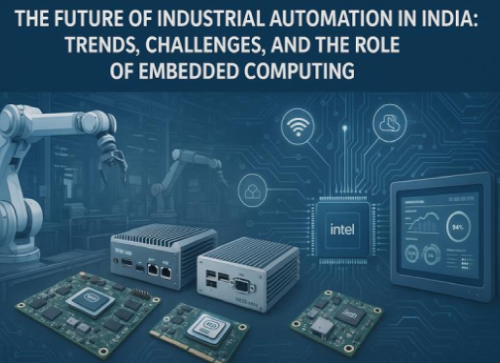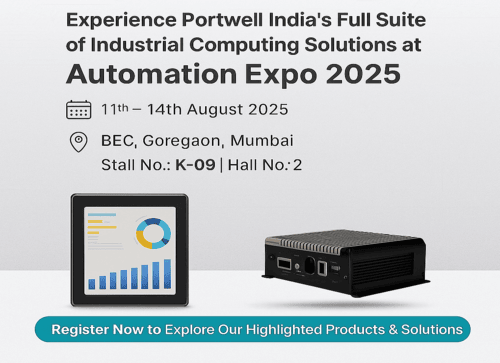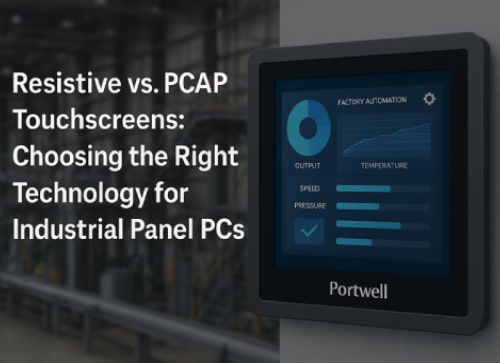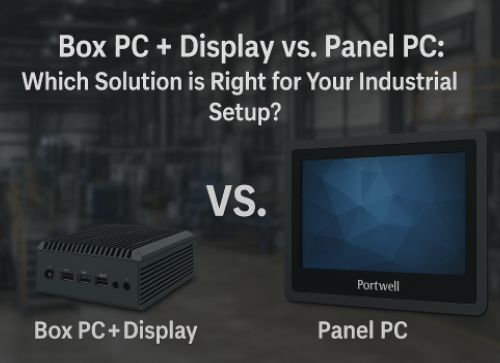Build a Smarter, Safer Network with Portwell’s SD-WAN Solutions
Build a Smarter, Safer Network with Portwell’s SD-WAN Solutions In today’s digital-first world, businesses are expanding rapidly — across branches, regions, and the cloud. Managing all these connections securely and reliably has become a mission-critical priority. That’s where Portwell SD-WAN Solutions come in. Portwell, a trusted leader in embedded computing and edge networking, offers scalable SD-WAN hardware and solutions that help modern enterprises simplify complex networks, cut costs, and boost performance. What Is SD-WAN? SD-WAN stands for Software-Defined Wide Area Network. Unlike traditional WANs that rely on expensive, rigid MPLS circuits, SD-WAN uses software to intelligently route network traffic over the best available connections — broadband, LTE, fiber, or MPLS. Key benefits: Optimizes bandwidth usage Improves application performance Increases network agility Provides centralized management and security In short, SD-WAN Solutions help organizations keep pace with cloud adoption, remote work, and IoT expansion — without compromising performance or security. Who Should Use SD-WAN? IT Managers & Network Administrators — who need more control and visibility. CTOs & CIOs — driving digital transformation while managing network costs. Enterprise decision-makers — in industries like banking, retail, manufacturing, healthcare, and any multi-branch operations. If your business runs multiple offices, branch sites, or needs secure cloud access — SD-WAN is no longer optional, it’s strategic. Key Applications & Use Cases 1. Connecting Branch Offices Traditional WANs are expensive and inflexible when connecting multiple branches. With SD-WAN Solutions, companies can: Use multiple Internet connections (MPLS, broadband, LTE) simultaneously. Automatically route critical applications through the fastest link. Prioritize voice, video, and business apps for better user experience. Scale quickly when opening new sites. Example: A retail chain connects hundreds of stores to its headquarters with Portwell’s SD-WAN edge appliances, ensuring secure POS transactions and reliable data transfer without huge MPLS costs. 2. Replacing Traditional MPLS SD-WAN is a smart alternative to rigid MPLS networks. It allows companies to reduce dependency on costly leased lines while maintaining performance. Benefits: Flexible bandwidth. Dynamic path selection for failover. End-to-end encryption for secure data. Example: A bank uses Portwell’s SD-WAN routers to securely connect ATMs, branches, and data centers — achieving cost savings and faster deployment compared to legacy MPLS. 3. Enabling Cloud Access & Remote Work Today’s workforce relies heavily on cloud applications — from CRM to ERP to video conferencing. SD-WAN optimizes direct cloud access and improves performance for remote teams. Advantages: Direct cloud breakout for SaaS apps. Better traffic visibility and control. Consistent performance for work-from-anywhere users. Example: A manufacturing company with remote engineering teams uses Portwell’s SD-WAN solution to connect users securely to design files and project tools hosted in the cloud. 4. Supporting IoT & Edge Connectivity Modern enterprises are adding IoT devices and edge sensors to monitor operations in real-time. SD-WAN provides the secure, resilient backbone to connect these edge devices reliably. Benefits: Low-latency connections for real-time data. Centralized policy control. End-to-end encryption for sensitive IoT data. Example: A factory deploys Portwell’s rugged SD-WAN edge gateways to connect industrial IoT sensors and machinery to its central monitoring system, boosting efficiency and predictive maintenance. Why Choose Portwell for SD-WAN Solutions? As a trusted industrial computing partner, Portwell brings proven expertise in designing embedded hardware, edge appliances, and custom networking platforms — all optimized for SD-WAN deployments. What sets Portwell apart: Rugged, reliable hardware designed for harsh environments. Scalable edge appliances for branch, campus, or IoT edge sites. Long product lifecycle support for industrial and enterprise applications. Flexible design and customization for unique network requirements. Whether you need a compact SD-WAN box for remote offices, a high-performance gateway for multi-branch networks, or an edge-ready appliance for IoT — Portwell helps you build a secure, high-performance WAN tailored to your goals. Benefits of SD-WAN at a Glance: Simplify complex networks with centralized control. Improve application performance with intelligent traffic routing. Reduce network costs by leveraging affordable broadband. Strengthen network security with end-to-end encryption. Scale easily to new branches, sites, and remote teams. Ready to Optimize Your Enterprise Network? Modern businesses can’t afford outdated WAN architecture. With Portwell’s SD-WAN Solutions, you can future-proof your network, boost performance, and keep your workforce connected securely — wherever they are. Contact Portwell today to discuss your SD-WAN hardware and network upgrade needs.








